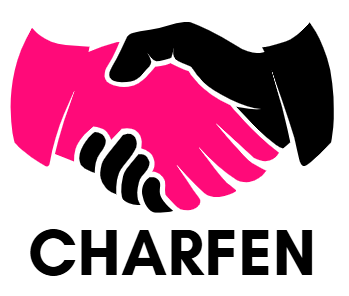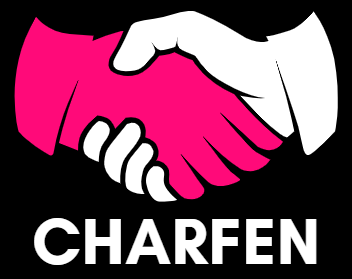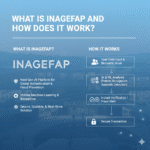Shape Your Career with a Professional Digital Design Course
The digital era is transforming the design industry very fast. Statista suggests that the global graphic design market in 2023 may exceed 45 billion dollars, and it is expanding. The explosive growth can be attributed to the impacts of technology, the needs of the user experience, and the rising demand for digital content.
For students and professionals, selecting a digital design course has become a strategic choice to build future-ready careers. Proper training can open the door to creativity, innovation, and job opportunities, and talented designers are required in every corner of the industrial sector.
Why Choose a Digital Design Course Today?
Pursuing a digital design course today is not just an option, but a necessity. The industry outlook proves why.
- The world digital media industry is projected to reach over $650 billion in 2030.
- Designers with UX, UI, and multimedia skills in their portfolio receive wages that are 25% more than those of conventional designers.
- Over 70 percent of the firms are seeking digitally skilled professionals.
- Employers are also interested in finding candidates with both creativity and technical expertise in tools and platforms.
- According to online learning platforms, there has been a 60 percent increase in enrollments in digital design programs since 2021.
A digital design course equips learners with in-demand skills for diverse industries. Digital designers are needed in advertising and film, IT, and e-commerce.
Key Highlights of a Digital Design Course
A professional course in digital design provides structured training and hands-on exposure. It is a combination of creativity and superior digital technologies to equip students with industry challenges.
Essential Features of a Professional Course
There are always many differences, especially advantageous features, in professional courses over normal certificate or crash courses. These features are the chiselling tools that create skilled designers.
- Comprehensive Curriculum – Covers visual communication, user interface design, UX principles, 3D design, and animation.
- Real-World Learning – Involves practical assignments, workshops with industry, and mastery of design software.
- Cutting-Edge Tools – Training on Adobe Creative Suite, Figma, Blender, and other professional applications.
- Interdisciplinary Approach – Combinatory approach: incorporates technology, art, and business in comprehensive skill building.
- World View – Equips students with national and international industries of creativity.
- Portfolio Development – Assists students in presenting work with professional-quality design portfolios to employers.
Benefits for Students
A professional digital design course always comes with loads of benefits that speak for themselves in terms of your career development, and here they are.
- Enhances problem-solving skills through creative project execution.
- Improves employability in diverse domains like advertising, gaming, and digital marketing.
- Gives access to mentorship with industry professionals and alumni networks.
- Develops flexibility to new emerging technologies like AR, VR, and AI in design.
A digital design course is not just about learning tools but about understanding human-centered design. This combination of creativity and technical expertise makes graduates outstanding in competitive job markets.
Career Opportunities After a Digital Design Course
Completing a digital design course opens a wide spectrum of career possibilities. The career is as diverse as possible due to the necessity of professionals with various skills in many industries of the modern world.
Popular Career Roles
- UX/UI Designer – Develops accessible digital experiences in applications, sites, and platforms.
- Graphic Designer – Designs the graphics of branding, marketing campaigns, and digital media.
- Animation Artist – Creator of animated films, advertisements, and digital entertainment.
- Game Designer – Develops interactive processes in the gaming and e-sports sectors.
- Web Designer – Will develop websites that are aesthetically and practically appealing to various businesses.
- Motion Graphics Specialist – Plans moving graphics in adverts, films, and digital media.
- Product Designer – Design thinking, design prototypes, and innovative product interfaces.
Growth Potential and Industry Trends
- The design industry in India is projected to increase at an average of 23 percent per year, triggered by the demand for digital designs.
- The UX design market on its own is estimated at $20 billion in the global market by 2027.
- The design positions are reported to be high-demand positions, with more than 85 percent of employers in the IT and creative industries confirming it.
- Opportunities are expanding across the globe through remote opportunities where designers can work anywhere around the world.
A digital design course will equip graduates to meet the changing needs in the industries that are being influenced by creativity and technology.
How The University’s Approach Makes a Difference?
Choosing the right university for a digital design course shapes student success. Educational facilities such as those offering the best digital design courses are aimed at equipping students with innovation, creativity, and industry readiness.
Unique University Approach
- Industry-Aligned Curriculum – Developed in partnership with professionals and forefront design professionals.
- Project-Based Learning – Pupils engage in real-life tasks that mirror what is happening in the industry.
- Experienced Faculty – Teachers with both academic knowledge and professional industry expertise.
- Global Exposure – International collaborations, workshops, and exchange opportunities.
- Creative Learning Spaces – Prepared labs, studios, and high-end digital software access.
- Skill Integration – Focus on both creative problem-solving and technical execution.
Additional Support for Students
- Career counseling sessions for personalized guidance.
- Internship and placement opportunities with top design companies.
- Regular design competitions are to test creativity and innovation.
- Contacts with the alumni and industry leaders.
- Portfolio review to enhance employability and career preparedness.
The university’s practical and student-centered approach ensures that graduates of the digital design course are confident professionals. Not only are they willing to join the industry, but they are also prepared to be innovative and a leader.
Conclusion: Choosing the Right Digital Design Course
The creative industry is flourishing and offers the world talented designers. As the global design market continues to expand at an alarming pace, students need to get special training in order to keep up with the competition. A digital design course offers future-ready skills, professional exposure, and the ability to innovate in digital spaces.
In choosing a university, students must consider a good faculty, exposure to the industry, and excellent infrastructure. Top design colleges are offering holistic education, and graduates are ready to succeed. The right digital design course is more than academic–it is the gateway to creativity, growth, and global opportunities.











